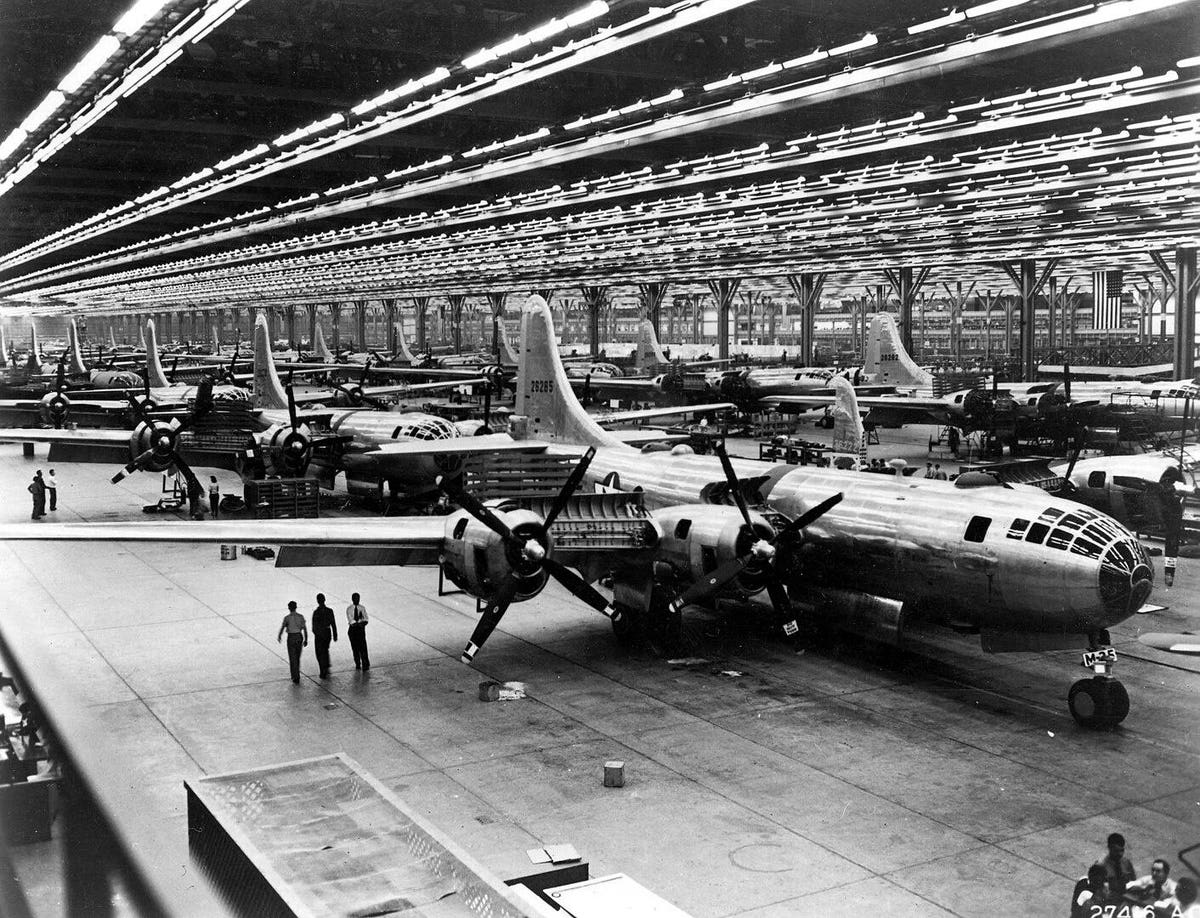Helmuth J.L.G. von Moltke, the general who led the German army during the early months of World War One, is said to have rebuffed a briefing on economic mobilization with the comment, “Don’t bother me with economics; I am busy conducting the war.”
Nobody at the Pentagon today would take such a stance. Military leaders have come to recognize that without a robust economy, it would be difficult to win a major war.
However, the “arsenal of democracy”—US industry—is not what it was when President Franklin Roosevelt first used that phrase in a 1940 radio broadcast. Two generations of removing barriers to free trade have resulted in many manufacturers moving offshore, or simply shutting down.
The Biden administration is committed to halting the deindustrialization of the US economy. It has launched a “whole of government” campaign to remedy flagging domestic production of items such as microelectronics and pharmaceuticals.
While numerous cabinet agencies are engaged in the effort, though, there is little doubt which department will have the biggest impact on rebuilding American manufacturing. It will be the Department of Defense.
That is not to say that the military has a bigger impact on industrial activity than tax policy or government subsidies, but many such proposals run afoul of the partisan divide in Congress, and thus are difficult to implement.
The military, on the other hand, presents itself as a readily available tool for bolstering US manufacturing in a political culture that often seems paralyzed over domestic priorities. Here are five reasons the road to revitalizing American manufacturing will inevitably run through the Pentagon.
America’s military is a huge consumer of complex industrial products. The Department of Defense will spend over $300 billion in 2024 on development and production of warfighting systems—an amount that dwarfs annual outlays for projects such as infrastructure renewal and the civil space program. The Pentagon is a dominant source of demand in industrial sectors such as shipbuilding and aerospace.
Many of the areas where the military invests most heavily involve “dual use” technologies, meaning technologies with both defense and civilian applications. Oshkosh Corporation, the nation’s most diversified truck maker, was rescued from insolvency during the subprime crisis by a timely Pentagon order for armored vehicles using the same suppliers and production processes.
In addition, the Department of Defense has extensive legal authorities for shaping industrial priorities, most notably the Defense Product Act. The Biden administration has tapped these authorities in executing its industrial revitalization plans.
The biggest military contractors are serial innovators. Companies like Boeing, Lockheed Martin and RTX each hold thousands of patents. In many cases, that intellectual property supports both military and commercial businesses. For instance, the Pratt& Whitney unit of RTX, which builds the F-35 fighter engine, also has pioneered development of the revolutionary geared turbofan for jetliners.
The skills required for industrial manufacturing are typically fungible across diverse markets. This is true even when a military program seems to be of little relevance to the commercial world. Lockheed Martin’s work on hypersonic weapons requires breakthroughs in lightweight composites, advanced electronics and the like—technologies with potential civilian applications.
Lockheed, like the other companies mentioned here, contributes to my think tank.
National security has broad political appeal. When it comes to stimulating economic activity, Republicans tend to favor tax cuts and Democrats tend to favor workforce investments. Getting members of either party to cross the aisle in support of the other party’s priorities is not easy. The main exception to this pattern is national security.
Big majorities in both political parties support robust spending on defense. That is driven in part by a cultural preference for ‘peace through strength,’ and in part by a recognition that military outlays generate millions of jobs at the local level. Whatever the motivation though, national security is one of the few policy areas where winning bipartisan support for big investment outlays is not a challenge.
Military projects drive the use of digital manufacturing tools. A key factor behind the movement of US factories offshore has been the availability low-cost labor in other countries. The most useful way domestic manufacturers can counter that challenge is by substituting technology for people. The military has been a prime mover in encouraging industry to digitize every facet of the manufacturing process.
All of the nation’s next-generation weapons programs, from the Air Force’s B-21 bomber to the Navy’s Columbia-class submarine to the Army’s Future Vertical Lift program leverage digital engineering, rapid software development, paperless production processes and other cutting-edge innovations. Many of these innovations originated in America, and virtually all are relevant to the revitalization of the manufacturing economy.
The Pentagon routinely pursues public-private partnerships. The traditional business model for manufacturers involved only modest interaction between producers and consumers before sales occurred. That is not the way the military market operates, because it is a monopsony and the only customer that matters insists on a seat at the table from Day One. The development of warfighting systems thus tends to be a collaborative undertaking in which the customer has a big impact on design choices.
In recent years, this collaborative ethos has encouraged the emergence of public-private partnerships aimed at spurring the assimilation of new technologies that can give U.S. warfighters enduring advantages. Organizations like the Defense Innovation Unit and Office of Strategic Capital work hand in glove with industry to speed adoption of emerging technologies and eliminate supply-chain vulnerabilities.
The evolution of national industrial policy is still in early days. But as the above points illustrate, it is already clear that the Pentagon will play a key role in whatever framework ultimately emerges.
Boeing, Lockheed Martin and RTX all contribute to my think tank. The quote attributed to General von Moltke is from T. Harry Williams’ 1960 book, “Americans At War.”
Read the full article here





